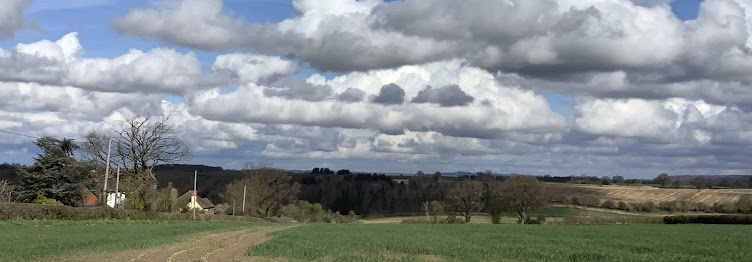WARNING - contains GRAPHIC pictures and descriptions of birds being cut up, which you may not like if you are squeamish about these things. It is dedicated to all the people who arrive at this blog looking advice on how to prepare a pheasant - it is unbelieveable how many of you there are!

Every so often in the season we get given a brace of these. Or sometimes we happen upon a not-too-squished roadkill bird. When we first started out with pheasant which did not come handily prepared, we plucked and gutted them (a joyless task). But actually, the best bits are the breasts and legs - the rest is quite scrawny and barely worth saving. This fine pair were hanging for about ten days in our cold stone shed, and smelled quite gamey, though they were in good condition. (Don't be put off by the smell, it's deceptively honky). So this is a quick, easy, clean way of butchering your bird - use as sharp a knife as you can get, and be careful with it. First get a black bin liner to work in, else the feathers get everywhere. Lay the bird on its back, and pluck the chest feathers off to expose the skin.

The skin is like a little jacket which holds everything in - what you need to do is gently make a shallow incision from the base of the throat down to the bottom, taking care not to dig into the flesh - you are only cutting the skin, so that you can peel it back. It will come away quite easily. Avoid opening up the crop (which often has the remains of the last meal inside) situated like a little sac near the base of the neck.


When you have exposed the breasts, it will look more familar, like your Sunday roast. All you need do now is cut each one away from the bone.


Then move on to the legs, taking care not to piece any innards.

It takes about 15 minutes to do both birds, and if you have done it in a sack, you can tidy up easily. You are left with a good selection of bits, which just need trimming.

Remove excess feathers, and if you like, singe the fine bits off over a tea light. Wash it all under a cold tap and then use as required. See also -

Every so often in the season we get given a brace of these. Or sometimes we happen upon a not-too-squished roadkill bird. When we first started out with pheasant which did not come handily prepared, we plucked and gutted them (a joyless task). But actually, the best bits are the breasts and legs - the rest is quite scrawny and barely worth saving. This fine pair were hanging for about ten days in our cold stone shed, and smelled quite gamey, though they were in good condition. (Don't be put off by the smell, it's deceptively honky). So this is a quick, easy, clean way of butchering your bird - use as sharp a knife as you can get, and be careful with it. First get a black bin liner to work in, else the feathers get everywhere. Lay the bird on its back, and pluck the chest feathers off to expose the skin.

The skin is like a little jacket which holds everything in - what you need to do is gently make a shallow incision from the base of the throat down to the bottom, taking care not to dig into the flesh - you are only cutting the skin, so that you can peel it back. It will come away quite easily. Avoid opening up the crop (which often has the remains of the last meal inside) situated like a little sac near the base of the neck.


When you have exposed the breasts, it will look more familar, like your Sunday roast. All you need do now is cut each one away from the bone.


Then move on to the legs, taking care not to piece any innards.

It takes about 15 minutes to do both birds, and if you have done it in a sack, you can tidy up easily. You are left with a good selection of bits, which just need trimming.

Remove excess feathers, and if you like, singe the fine bits off over a tea light. Wash it all under a cold tap and then use as required. See also -










